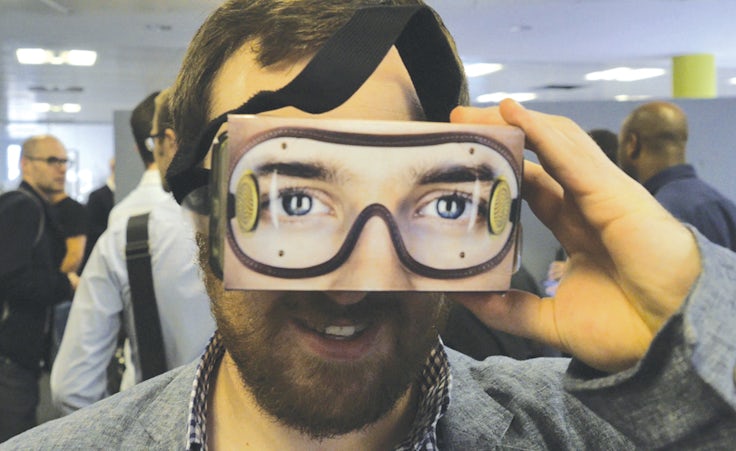Why the digital user experience is synonymous with brand
The digital customer experience is becoming as important a differentiator for brands as product and price.

Utilities companies offer a great case study for the growing importance of user experience. Whichever supplier you use, the stuff in the pipes is the same: it’s the service wrapped around the gas/electricity/water that you ultimately pay for.
As competition blossoms in the sector, companies understand that, for some customers, user experience is as much a differentiator as price.
In 2016, British Gas ended its 14-year relationship with media agency Carat and appointed MediaCom, which reportedly best answered the pitch question: ‘How would you turn British Gas into a modern British brand in a modern British society?’
The link between modern brands and usability is without doubt. It is why Uber gets mentioned so often, again a company that provides simply the service wrapped around a taxi ride.
Usability isn’t always a digital trait, of course, but it is increasingly digital, as technology becomes cheaper and offers speed and economies of scale.
Marketing Week recently spoke to British Gas director of brand marketing Margaret Jobling at ISBA’s annual conference. She said: “We have been, at its worst end, a telephone billing business where we send you a paper bill, you call us, and if there’s a problem we will call you. [We’re now] saying we need to move to be digital-first, self-serve, always-on, personalised and targeted in how we talk to our customers.”
Much of that statement relates to digital user experience and shows how the brand is fighting back after a whopping 400,000 customers left British Gas in the first six months of 2016.
Pressure to provide best-in-class UX
Steffan Aquarone, co-author of Econsultancy’s ‘User Experience and Interaction Design for Mobile and Web’ guide, describes ease of use as “the single most powerful way to beat the competition.” He adds: “Making things easier is such a powerful benefit that it seems to be the fastest way of spreading the news too.”
Aside from Uber, there are plenty more digital-born darlings of user experience (UX) that are pressuring more traditional companies by raising consumer expectations of ease of use.
Those providing best-in-class UX include Transferwise and Mondo in financial services, AO.com and Amazon in ecommerce, Airbnb and Booking.com in travel.
The effects of rising consumer expectations can be seen in the surge in ad blocker usage over the past couple of years. Users are no longer willing to put up with the poor usability of display ads. Similarly, live chat and social media have been cemented as customer service channels for a number of years, as consumers are no longer willing to wait on a telephone line. KLM is already partially automating social messaging to further quicken response rate.
Hierarchy of UX

The relationship between brand and UX can be seen in the hierarchy of UX, a diagram taken from the aforementioned Econsultancy design guide (see image, above).
The pyramid works a bit like Maslow’s hierarchy of needs. An experience – for example, submitting a reading through the British Gas app – must first be:
- viable
- then consistent (solving the same types of problems in the same way, for example form fields)
- then predictable (are unfamiliar tasks easy to tackle?)
- then with appropriate friction (highlighting areas that might cause problems, for example the little bounce when you hit the bottom of a page) and flow (promoted actions, such as autofilling fields)
- then branded (building an emotional connection with users, conveying identity or personality).
The UX hierarchy is just one part of a broadening definition of ‘brand’.
A fully realised brand should set expectations through a purpose, create emotions, stimulate the senses through interactive experiences, enable behaviours and lifestyles, and inspire social connection.
In Econsultancy’s ‘Implementing a Customer Experience Strategy’ guide, Laurence Parkes, chief strategy officer at agency Rufus Leonard, puts it thus: “What has been lost is the understanding. When you talk to people about brand, they still think you mean logo and visual identity. We’re now seeing a sea change in management, which is about understanding the brand narrative and growth of purpose.”
Challenge for businesses
UX is an integral part of the overall customer experience. Companies not only have to master mobile design, but get the most from first-party data in order to properly serve their customers.
Furthermore, customer lifetime value has to be prioritised over short-term sales, with the aim of a deepened customer relationship.
Forty per cent of respondents in Econsultancy’s ‘Implementing a Customer Experience Strategy’ survey said that each department in their company is working to its own agenda as far as the customer experience is concerned.
Perhaps it is now strategy and leadership, not legacy technology or complexity, that is preventing brands from catching up with their best-in-class counterparts.







